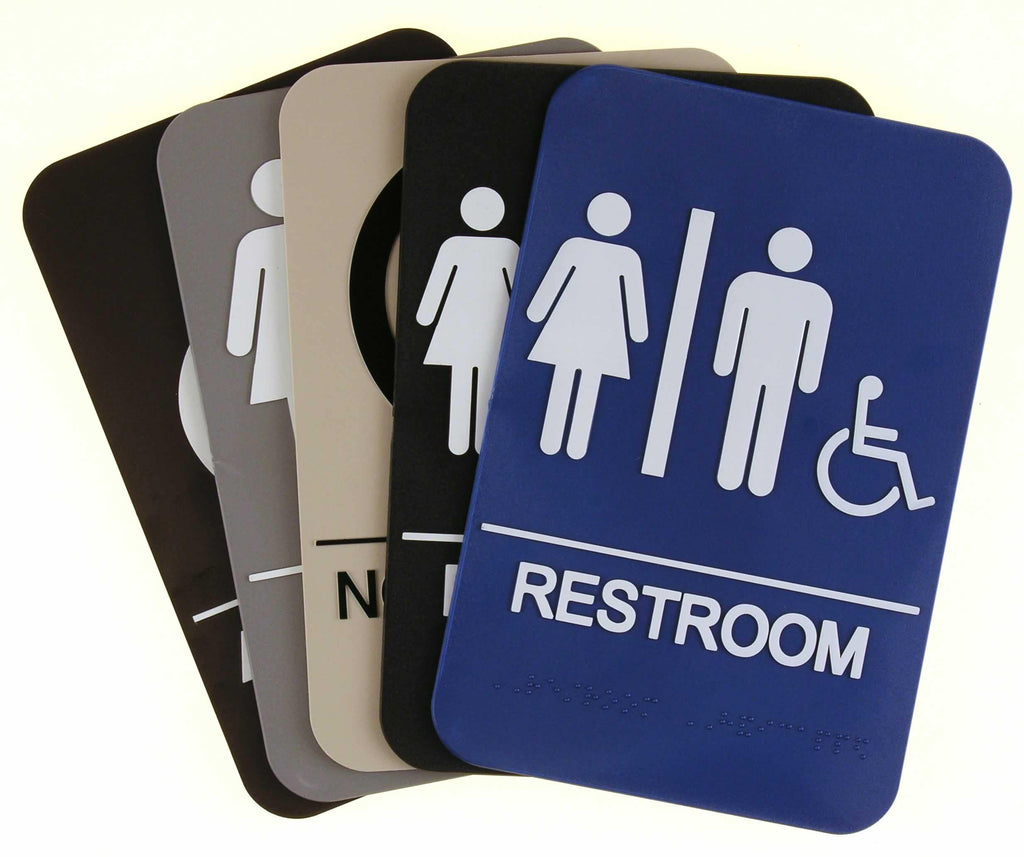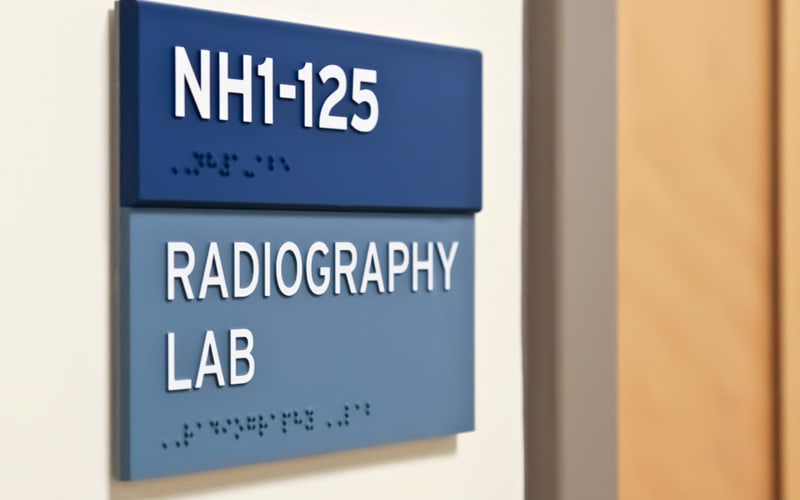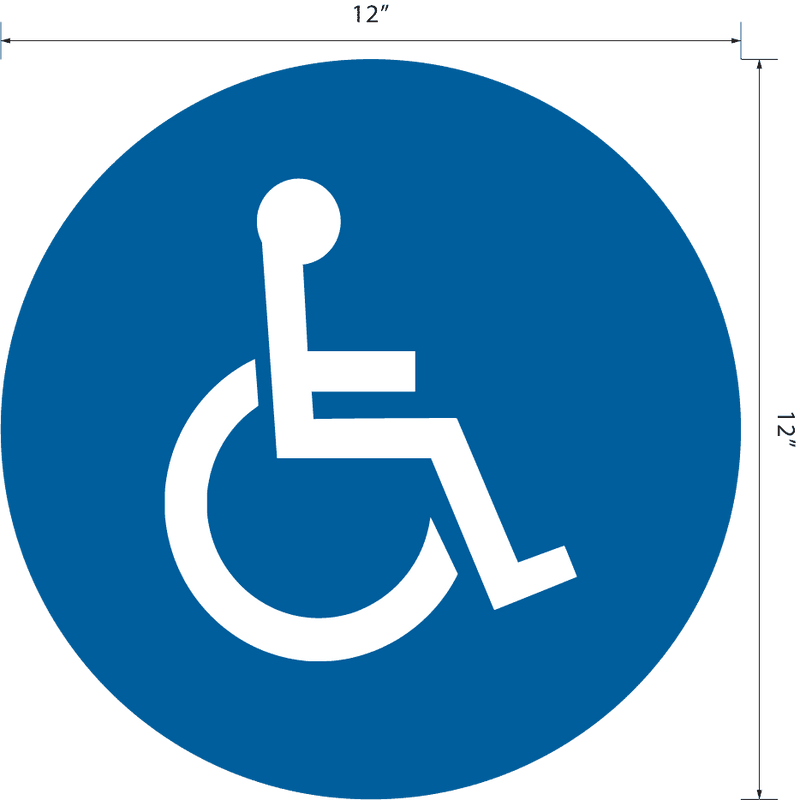How ADA Signs Improve Ease Of Access for Everyone
How ADA Signs Improve Ease Of Access for Everyone
Blog Article
Discovering the Trick Attributes of ADA Indicators for Improved Availability
In the world of ease of access, ADA indicators serve as quiet yet powerful allies, making certain that rooms are accessible and inclusive for individuals with disabilities. By incorporating Braille and tactile aspects, these indications damage barriers for the visually impaired, while high-contrast shade schemes and readable typefaces cater to diverse aesthetic demands.
Significance of ADA Conformity
Ensuring compliance with the Americans with Disabilities Act (ADA) is critical for fostering inclusivity and equal accessibility in public rooms and workplaces. The ADA, passed in 1990, mandates that all public centers, employers, and transport solutions accommodate individuals with specials needs, guaranteeing they enjoy the same legal rights and chances as others. Compliance with ADA requirements not just meets legal obligations but likewise improves a company's online reputation by showing its dedication to variety and inclusivity.
One of the vital facets of ADA compliance is the implementation of accessible signs. ADA indications are designed to ensure that people with impairments can easily browse with buildings and rooms.
Additionally, adhering to ADA regulations can alleviate the danger of lawful consequences and prospective penalties. Organizations that fall short to follow ADA guidelines might face fines or suits, which can be both financially challenging and damaging to their public picture. Hence, ADA compliance is indispensable to promoting a fair atmosphere for every person.
Braille and Tactile Elements
The unification of Braille and tactile elements right into ADA signage personifies the principles of accessibility and inclusivity. These features are critical for individuals that are aesthetically damaged or blind, enabling them to navigate public areas with better independence and confidence. Braille, a responsive writing system, is essential in supplying created information in a style that can be conveniently regarded through touch. It is generally put under the corresponding text on signage to make sure that people can access the information without visual help.
Tactile aspects prolong beyond Braille and include elevated characters and symbols. These parts are created to be noticeable by touch, enabling individuals to identify area numbers, toilets, departures, and other important areas. The ADA sets details standards relating to the size, spacing, and placement of these responsive aspects to optimize readability and ensure uniformity across different environments.

High-Contrast Color Systems
High-contrast color pattern play a crucial function in enhancing the presence and readability of ADA signage for people with visual problems. These plans are essential as they maximize the distinction in light reflectance between message and background, making sure that signs are quickly discernible, even from a range. The Americans with Disabilities Act (ADA) mandates the use of details color contrasts to suit those with limited vision, making it a critical aspect of conformity.
The efficacy of high-contrast shades depends on their ability to attract attention in various illumination problems, including poorly lit settings and areas with glow. Typically, dark text on a light history or light text on a dark background is utilized to attain optimal contrast. As an example, black message on a white or yellow background supplies a raw visual difference that helps in fast recognition and understanding.

Legible Fonts and Text Dimension
When thinking about the design of ADA signage, the selection of understandable typefaces and proper text size can not be overemphasized. The Americans with Disabilities Act (ADA) mandates that typefaces have to be not italic and sans-serif, oblique, manuscript, very ornamental, or of uncommon kind.
The dimension of the text also plays a pivotal role in accessibility. According to ADA guidelines, the minimal text height need to be 5/8 inch, and it must enhance proportionally with viewing range. This is particularly essential in public visit the website rooms where signage demands to be checked out quickly and properly. Consistency in message size contributes to a natural visual experience, assisting people in browsing environments efficiently.
In addition, spacing between lines and letters is essential to readability. Sufficient spacing protects against characters from showing up crowded, enhancing readability. By sticking to these criteria, designers can significantly enhance access, guaranteeing that signs serves its designated objective for all individuals, regardless of their aesthetic capabilities.
Reliable Positioning Techniques
Strategic positioning of ADA signs is crucial for maximizing ease of access and guaranteeing compliance with lawful criteria. ADA standards state that indications should be mounted at an elevation in between 48 to 60 inches from the ground to ensure they are within the line of view for both standing and seated people.
Furthermore, signs need to be positioned surrounding to the latch side of doors to enable very easy recognition prior to entry. Consistency in indicator placement throughout a facility boosts predictability, minimizing confusion and enhancing overall user experience.

Conclusion
ADA indicators play an important role in advertising availability by incorporating attributes that address the needs of people with impairments. These elements collectively cultivate an inclusive setting, underscoring the relevance of ADA conformity in making sure equivalent gain access to for all.
In the world of accessibility, ADA signs offer as quiet yet powerful allies, making sure that spaces are accessible and inclusive for individuals with handicaps. The ADA, enacted in 1990, mandates that all public centers, companies, and transport solutions fit people with disabilities, ensuring they enjoy the exact same rights and opportunities as others. ADA Signs. ADA signs are made to make certain that people with impairments can easily browse via rooms and structures. ADA guidelines stipulate that indicators ought to be placed at a height in between 48 to 60 inches from the ground to guarantee they my site are within the line of sight for both standing and seated people.ADA indications play a vital duty in promoting availability by incorporating attributes that attend to the needs of people with specials needs
Report this page